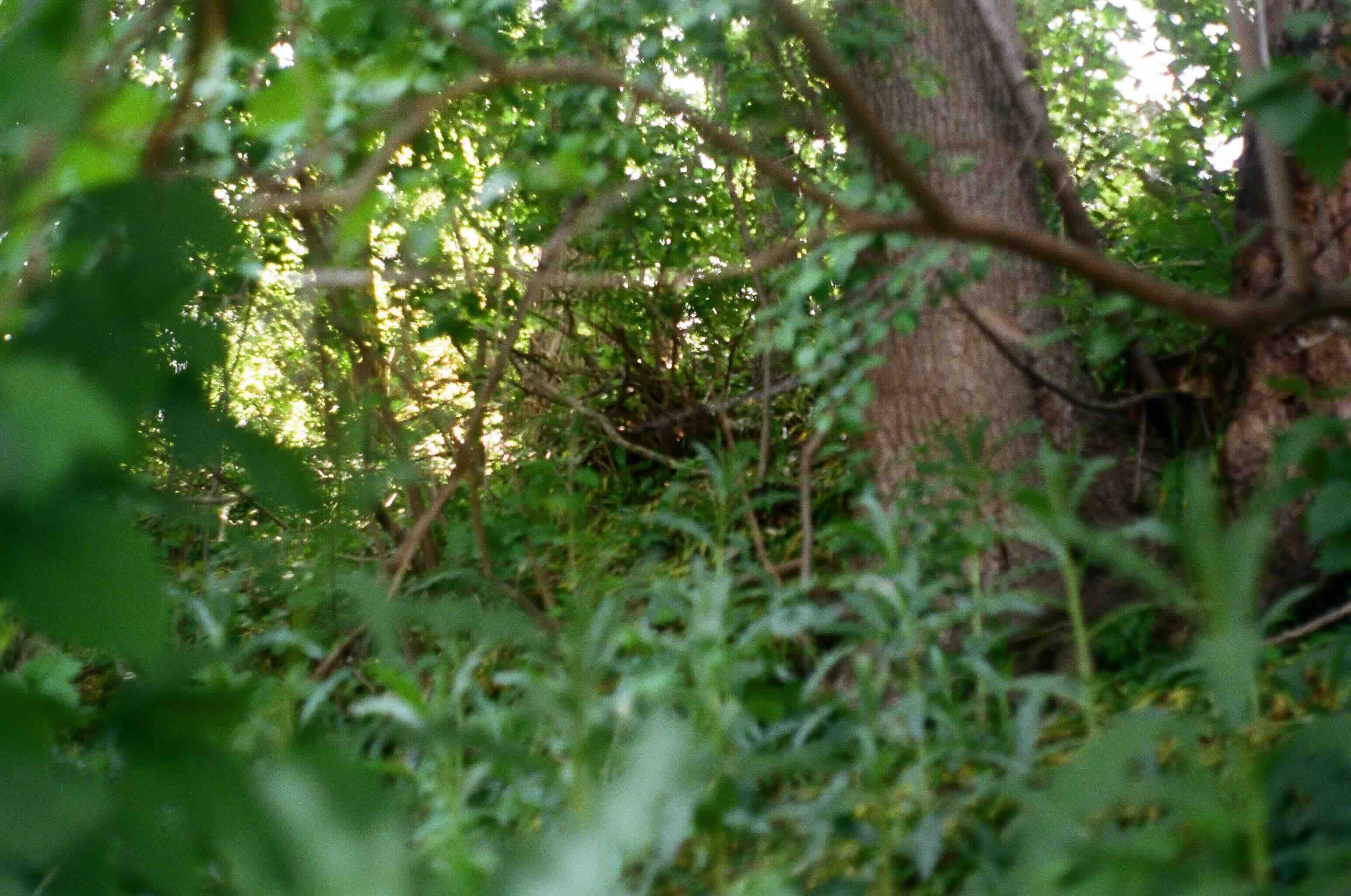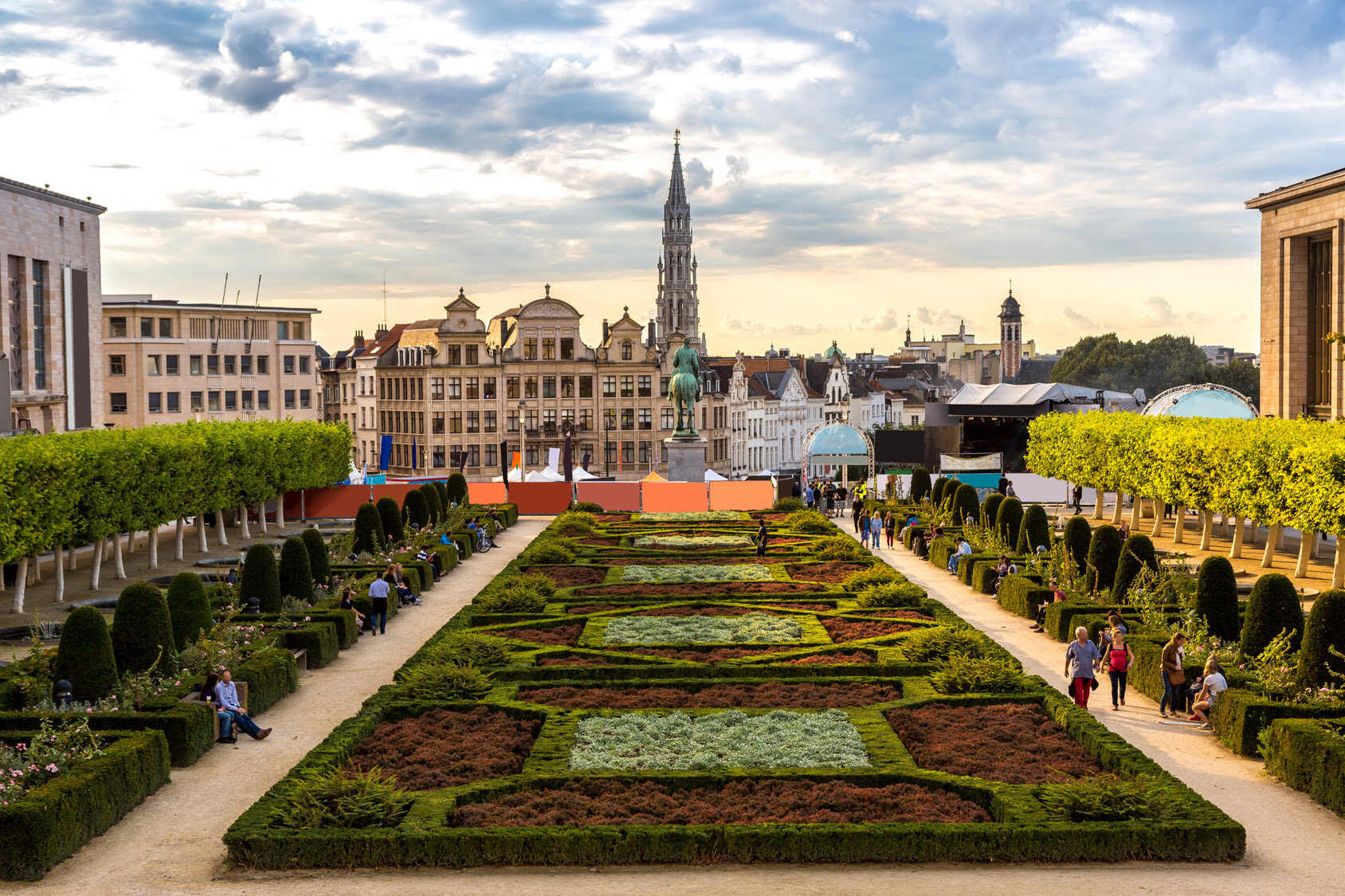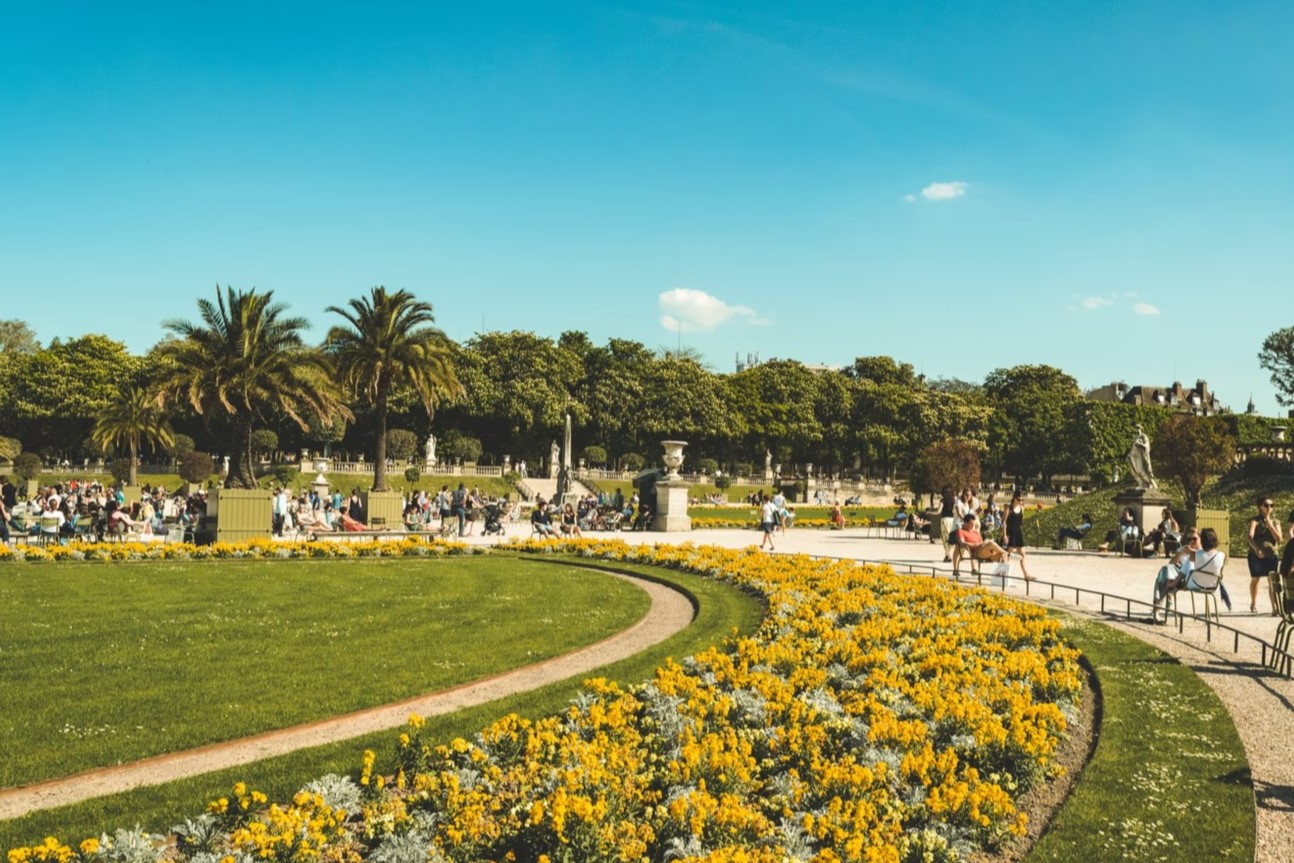Home>Garden Essentials>Which State Has The Most Greenery


Garden Essentials
Which State Has The Most Greenery
Modified: March 7, 2024
Discover which state has the lushest garden landscapes and abundant greenery. Explore the perfect destinations for nature lovers and garden enthusiasts.
(Many of the links in this article redirect to a specific reviewed product. Your purchase of these products through affiliate links helps to generate commission for Storables.com, at no extra cost. Learn more)
Introduction
Welcome to our comprehensive guide on the states with the most impressive greenery. As nature lovers, garden enthusiasts, and admirers of the great outdoors, we understand the importance of green spaces in our lives. From lush forests and sprawling meadows to vibrant parks and botanical gardens, greenery not only adds beauty to our surroundings but also provides numerous benefits for both humans and the environment.
In this article, we will delve into the rich landscape of the United States and explore which states boast the most abundant and diverse greenery. We will walk you through our methodology, present the results, and provide a detailed comparison of greenery by state. Additionally, we will discuss the factors that contribute to the abundance of green spaces, the challenges they face, and the impacts greenery has on the environment. Finally, we will highlight the economic benefits of preserving and cultivating green spaces.
Whether you’re looking for a nature retreat, planning a cross-country road trip, or simply curious about the states that offer the most lush scenery, this guide will provide you with all the information you need. So, put on your hiking boots, grab your camera, and let’s embark on a journey through the verdant wonders of the United States!
Key Takeaways:
- California, Oregon, and Washington are the top states with the most greenery, offering diverse landscapes and natural wonders for outdoor enthusiasts to explore and enjoy.
- Green spaces provide environmental benefits like absorbing carbon dioxide, improving air quality, supporting biodiversity, and offering economic advantages such as tourism income, increased property values, and job creation.
Read more: Which Country Has The Most Greenery
Methodology
When it comes to determining which states have the most greenery, we utilized a comprehensive approach that took into account several key factors. To ensure accuracy and reliability, we relied on a combination of data sources, including satellite imagery, government databases, and expert analysis.
Firstly, we obtained high-resolution satellite imagery of each state from reputable sources. This allowed us to assess the percentage of land covered by vegetation, including forests, grasslands, and other types of green spaces. We used advanced image analysis techniques to quantify the extent of greenery in each state.
In addition to satellite imagery, we consulted various government databases that provided information on the number and size of national parks, state parks, and other protected areas within each state. These areas are often characterized by their abundant flora and fauna, making them significant contributors to a state’s overall greenery.
We also took into account the presence of urban parks, botanical gardens, and arboretums. These man-made green spaces add a touch of nature to densely populated areas and contribute to the overall greenery of a state. We considered factors such as the size, number, and diversity of these recreational areas.
Furthermore, we consulted with experts in the field of botany and ecology to gain insight into the biodiversity and ecological health of each state. By considering factors such as the number of endemic plant species, the presence of rare or threatened species, and the overall ecological balance, we were able to assess the richness and vitality of the greenery in each state.
Combining the data from these multiple sources, we assigned a ranking to each state based on their overall greenery score. The higher the score, the more abundant and diverse the greenery in that state.
While our methodology provides a comprehensive assessment of greenery, it is important to note that it does not account for seasonal variations or changes over time. Additionally, there may be some variations in data accuracy due to the limitations of satellite imagery and available databases. However, we have taken great care to ensure the reliability and integrity of our findings.
Now that we have outlined our methodology, let’s move on to the exciting part – the results!
Results
After conducting our analysis and considering multiple factors, we have compiled a list of the top states with the most remarkable greenery. These states have showcased an abundance of natural landscapes, thriving forests, expansive parks, and flourishing gardens. Let’s delve into the results and explore the states that emerged at the top.
- California: Known for its diverse ecosystems, California takes the lead as the state with the highest greenery score. With its stunning coastline, majestic redwood forests, and sprawling vineyards, California offers a captivating blend of natural wonders.
- Oregon: Coming in second place is Oregon, a state famous for its scenic beauty and lush landscapes. From the lush forests of the Cascade Range to the charming Columbia River Gorge, Oregon offers an abundance of green spaces for outdoor enthusiasts to explore.
- Washington: With its iconic Mount Rainier, picturesque Olympic National Park, and verdant islands, Washington claims the third spot on our list. This state is blessed with an impressive array of greenery, perfect for hiking, camping, and enjoying the great outdoors.
- Colorado: Known for its majestic Rocky Mountains, Colorado secures the fourth position. This state boasts numerous national parks, such as Rocky Mountain National Park and Great Sand Dunes National Park, providing breathtaking views and opportunities for outdoor adventures.
- Alaska: With its vast wilderness, glaciers, and breathtaking landscapes, Alaska rounds up the top five greenest states. From Denali National Park to the Kenai Fjords, Alaska offers a pristine and untouched natural environment that is unparalleled.
These states have distinguished themselves with their commitment to preserving and cultivating green spaces, allowing residents and visitors to connect with nature and enjoy the numerous benefits it provides.
However, it is important to note that greenery is not limited to these top-ranking states. The United States is home to a wealth of natural beauty, and each state offers its own unique blend of landscapes and green spaces.
Now that we know the results, let’s dive deeper into the comparison of greenery by state to gain a better understanding of what makes these states stand out.
Comparison of Greenery by State
While the top-ranking states mentioned previously are known for their exceptional greenery, it’s worth exploring the variations and unique characteristics that contribute to their rankings. Let’s take a closer look at how these states compare in terms of their greenery.
California, with its diverse ecosystems, offers an impressive variety of green spaces. From the towering redwood forests of Northern California to the stunning coastal scenery of Big Sur, the state is a haven for nature enthusiasts. It also boasts numerous national parks, including Yosemite, Joshua Tree, and Sequoia National Park, which showcase the state’s incredible natural beauty.
Oregon, renowned for its lush landscapes, is home to vast forests, cascading waterfalls, and abundant wildlife. The Columbia River Gorge and Mount Hood National Forest are iconic examples of the state’s picturesque greenery. Additionally, Oregon’s commitment to sustainability and environmental conservation is evident in its numerous protected areas and thriving urban parks.
Washington, nestled in the Pacific Northwest, offers a remarkable blend of mountains, forests, and coastline. The Olympic National Park, with its rainforests and pristine lakes, is a highlight of the state’s greenery. The San Juan Islands, known for their stunning natural beauty, are another gem that contributes to Washington’s reputation as a green paradise.
Colorado, known for its rugged mountainous landscapes, is a haven for outdoor enthusiasts. The state boasts numerous national parks, such as Rocky Mountain National Park and Mesa Verde National Park, where visitors can admire breathtaking alpine scenery, stunning canyons, and ancient cliff dwellings. Colorado’s commitment to preserving its natural heritage is evident in the numerous protected areas and green initiatives implemented throughout the state.
Alaska, often referred to as the “last frontier,” boasts an untouched wilderness that provides unparalleled greenery. From the vast Denali National Park, home to North America’s tallest peak, to the stunning Kenai Fjords National Park, Alaska offers a pristine natural environment that captivates visitors with its awe-inspiring landscapes and abundant wildlife.
While these states stand out for their greenery, it’s important to recognize that each state in the United States has its own unique charms and natural attractions. From the beautiful beaches of Florida to the rolling plains of Kansas, greenery can be found in every corner of the country.
Now that we’ve compared the greenery by state, let’s explore the factors that contribute to the abundance of green spaces.
Factors Contributing to Greenery
The abundance of green spaces in a state is influenced by a variety of factors. Understanding these factors can shed light on why certain states excel in terms of their greenery. Here are some of the key contributors:
- Climate and Geography: The climate and geography of a state play a significant role in determining its greenery. States with diverse ecosystems, such as California and Oregon, benefit from a range of climates and topographies that support a wide array of plant life. From coastal regions to mountainous areas, these states provide ideal conditions for lush greenery to thrive.
- Preservation Efforts: The commitment to preserving natural areas and creating protected spaces is crucial for maintaining greenery. States that prioritize conservation efforts, such as Washington and Colorado, have established national parks, state parks, and wilderness areas to safeguard the environment. These protected areas contribute significantly to the overall greenery of a state.
- Vegetation and Biodiversity: The presence of diverse plant species and abundant wildlife contributes to the overall greenery of a state. States like Alaska, with its untouched wilderness and extraordinary biodiversity, offer a wealth of green spaces. The variety of ecosystems, from forests to wetlands, supports a rich tapestry of plant life, creating a vibrant environment.
- Urban Planning and Green Infrastructure: In bustling urban areas, the incorporation of parks, gardens, and green spaces is vital. States that invest in urban planning and prioritize green infrastructure, such as California and Washington, offer residents and visitors accessible green spaces within cities. These urban parks contribute to the overall greenery and quality of life in these states.
- Public Awareness and Education: The awareness and appreciation of the importance of green spaces among the public play a significant role in maintaining and expanding greenery. States that have implemented environmental education programs and initiatives to raise awareness about the value of green spaces, like Oregon and Colorado, foster a culture of environmental stewardship.
By considering these factors, states can create a conducive environment for greenery to thrive, offering residents and visitors the opportunity to connect with nature and enjoy the numerous benefits it provides.
Now that we understand the factors contributing to greenery, let’s explore the challenges and potential threats that green spaces often face.
The state with the most greenery in the United States is Oregon. It is known for its lush forests, including the famous Columbia River Gorge and the Cascade Range.
Challenges to Maintaining Greenery
While green spaces offer numerous benefits, they also face various challenges that can hinder their preservation and maintenance. Understanding these challenges is crucial for implementing effective strategies to protect and sustain greenery. Here are some of the key challenges:
- Urbanization and Land Development: As urban areas expand, valuable green spaces are often replaced with buildings, parking lots, and infrastructure. The pressure for development can lead to the loss of natural habitats and fragmentation of green areas. Balancing urban growth with the preservation of green spaces is essential.
- Invasive Species and Pests: Invasive plant species and pests pose a threat to native flora and can disrupt the delicate ecological balance of green spaces. These invasions can reduce biodiversity and impact the health and vitality of greenery. Effective management strategies are necessary to control and mitigate the spread of invasive species and pests.
- Pollution and Climate Change: Pollution, including air and water pollution, can have detrimental effects on the health of green spaces. Industrial emissions, urban runoff, and chemical contamination can harm plants and wildlife, impacting the overall greenery. Additionally, climate change poses a significant threat, with rising temperatures, changing rainfall patterns, and extreme weather events affecting the viability of certain plant species.
- Human Activities and Overuse: Unregulated human activities, such as excessive hiking, camping, and off-road vehicle use, can cause damage to fragile ecosystems and disrupt the natural balance of green spaces. Overuse of popular areas can lead to soil erosion, trampling of vegetation, and disturbance of wildlife habitats. Proper management and visitor education are vital to minimize the impact of human activities.
- Budgetary Constraints: Many green spaces rely on public funding for their maintenance and upkeep. Budgetary constraints can limit resources available for preserving and improving greenery. Adequate funding and support are necessary to ensure the long-term sustainability of green spaces.
Addressing these challenges requires a multidisciplinary approach that involves collaboration between government agencies, conservation organizations, community groups, and individuals. By implementing sustainable practices, raising awareness, and adopting effective management strategies, we can overcome these challenges and ensure the preservation and longevity of green spaces.
Next, let’s explore the positive impacts that greenery has on the environment.
Impacts of Greenery on the Environment
Greenery plays a crucial role in maintaining the health and balance of the environment. From mitigating climate change to supporting biodiversity, the impacts of green spaces go far beyond their aesthetic appeal. Here are some of the key environmental benefits of greenery:
- Absorption of Carbon Dioxide: Plants are natural carbon sinks, absorbing carbon dioxide from the atmosphere through photosynthesis. Greenery helps combat climate change by reducing the concentration of greenhouse gases, such as carbon dioxide, in the air.
- Improved Air Quality: Trees and plants filter pollutants from the air by absorbing harmful gases and particulate matter. Green spaces act as natural air purifiers, helping to improve air quality and reduce the negative impacts of air pollution.
- Enhanced Biodiversity: Green spaces provide habitat for a diverse range of plant and animal species. By preserving and creating green areas, we foster biodiversity and support the ecological balance of ecosystems. This is crucial for maintaining healthy and resilient ecosystems.
- Water Management: Greenery plays a vital role in water management by absorbing rainwater and reducing stormwater runoff. Vegetation helps mitigate the risk of flooding, prevents soil erosion, and filters pollutants before they enter water bodies, contributing to improved water quality.
- Temperature Regulation: The shade provided by trees and vegetation helps cool urban areas, reducing the heat island effect caused by paved surfaces and buildings. Green spaces also release moisture through transpiration, further reducing temperatures and creating a more comfortable environment.
- Noise Reduction: Greenery acts as a natural buffer, reducing noise pollution by absorbing and deflecting sound waves. Trees, shrubs, and other vegetation can significantly minimize noise levels, creating a more peaceful and tranquil environment.
These environmental benefits highlight the importance of preserving and expanding green spaces. By recognizing the impacts of greenery, we can strive to protect and enhance these vital ecosystems.
Next, let’s explore the economic benefits that greenery brings to communities.
Economic Benefits of Greenery
Green spaces not only provide ecological benefits but also contribute to the economic well-being of communities. The presence of parks, gardens, and natural landscapes offers numerous economic advantages that extend beyond their aesthetic appeal. Here are some of the key economic benefits of greenery:
- Tourism and Recreation: Green spaces attract tourists and visitors, boosting local economies. Nature-based tourism, such as hiking, camping, and wildlife-watching, generates revenue through visitor spending on accommodations, dining, and recreational activities. Well-maintained parks and natural attractions draw visitors and stimulate local businesses.
- Property Values: Properties located near green spaces often experience higher values. Access to parks, gardens, or nature reserves enhances the desirability of neighborhoods, attracting homebuyers and increasing property prices. This can provide economic benefits to homeowners and contribute to overall community prosperity.
- Health and Well-being: Green spaces have a positive impact on public health. Access to parks and outdoor recreational areas encourages physical activity and promotes a healthy lifestyle. This, in turn, reduces healthcare costs and improves overall well-being. Healthy and active communities have a more productive workforce, contributing to economic growth.
- Green Infrastructure Savings: Green spaces provide cost savings through their role in managing stormwater runoff and reducing the need for expensive infrastructure solutions. By absorbing and filtering rainwater, greenery helps prevent flooding, minimizing damage to infrastructure and saving on costly repairs.
- Energy Efficiency: Strategically placed green spaces can help reduce energy consumption in urban areas. Trees and vegetation provide shade, which can lower temperatures and decrease the need for air conditioning. This energy savings benefit not only the individual properties but also the community as a whole.
- Job Creation and Local Businesses: The maintenance and management of green spaces support employment opportunities. Landscaping services, park maintenance, and eco-tourism businesses all contribute to job creation. Additionally, the presence of green spaces can stimulate the growth of local businesses, such as outdoor recreation providers or garden centers.
These economic benefits demonstrate the value of investing in green spaces and incorporating them into community planning. By recognizing the potential economic returns, governments, businesses, and communities can make informed decisions that promote the sustainable development of greenery.
Now that we’ve explored the economic benefits, let’s conclude our guide on states with the most greenery.
Conclusion
In conclusion, green spaces play a vital role in our lives, offering beauty, recreational opportunities, and numerous environmental and economic benefits. Through our comprehensive analysis, we have explored the states with the most impressive greenery and discovered the factors contributing to their abundance of green spaces.
California, Oregon, Washington, Colorado, and Alaska have emerged as the top states with remarkable greenery, each offering unique landscapes and natural wonders. However, it is important to acknowledge that all states in the United States have their own beauty and varying levels of greenery.
We have also discussed the challenges facing greenery, such as urbanization, invasive species, pollution, and budgetary constraints. By addressing these challenges and implementing sustainable practices, we can protect and enhance green spaces for future generations.
Furthermore, we have highlighted the positive impacts of greenery on the environment, including carbon absorption, improved air quality, biodiversity support, water management, temperature regulation, and noise reduction. These environmental benefits emphasize the need for preserving and expanding green spaces for the well-being of both humans and the ecosystem.
Moreover, greenery offers significant economic benefits, including tourism and recreation income, increased property values, improved public health, cost savings through green infrastructure, energy efficiency, job creation, and support for local businesses. Investing in green spaces can create thriving communities and contribute to economic prosperity.
In conclusion, green spaces are not merely aesthetically pleasing, but they serve as important assets that enhance our quality of life. By appreciating and preserving greenery, we can continue to enjoy the numerous benefits it provides while safeguarding the environment for future generations.
So, let’s continue to explore and cherish the green wonders of each state, and remember to take a moment to connect with nature’s splendor wherever we may roam.
Frequently Asked Questions about Which State Has The Most Greenery
Was this page helpful?
At Storables.com, we guarantee accurate and reliable information. Our content, validated by Expert Board Contributors, is crafted following stringent Editorial Policies. We're committed to providing you with well-researched, expert-backed insights for all your informational needs.















0 thoughts on “Which State Has The Most Greenery”